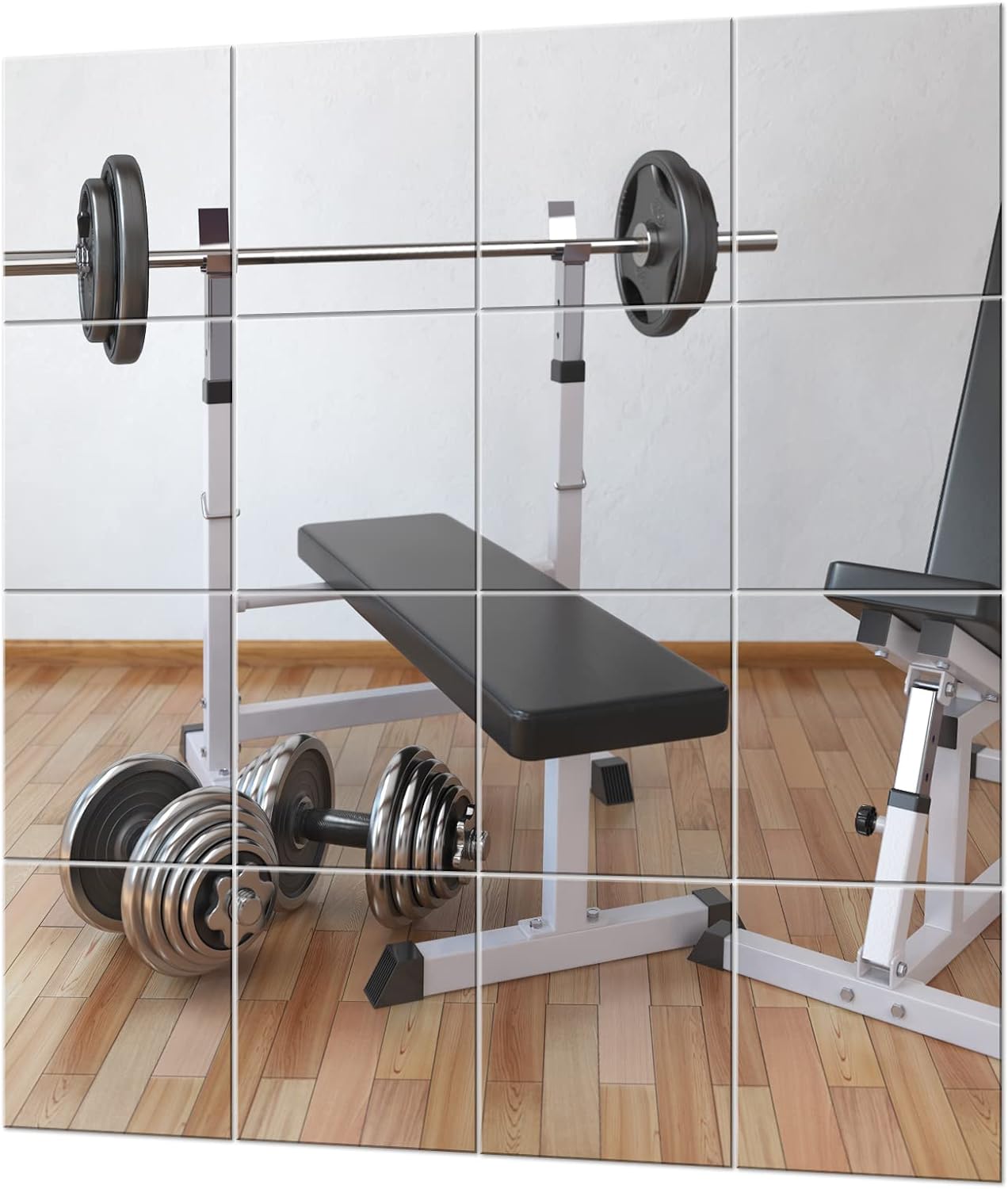Estimated reading time: 19 minutes
Introduction
Have you ever wondered are gym mirrors accurate reflections of ourselves or if they’re subtly altered to make us look a certain way? This question is not just a matter of curiosity for many gym-goers; it strikes at the heart of our perceptions about body image and self-confidence. In this exploration, we dive into the intriguing world of gym mirrors and their impact on how we see ourselves. As we stand in front of these mirrors, often questioning, “Do these mirrors make me look bigger?” or “Is this how I look?” it’s essential to understand the science and psychology behind gym mirror designs.
Mirrors in gyms are not just regular mirrors. They are often designed with specific purposes, from enhancing lighting conditions to potentially altering our perceptions of our physique. The question, “Do gym mirrors make you look different?” is complex, involving factors such as mirror angle, lighting, and even the psychological aspects of working out in a mirrored environment. This article aims to unravel these complexities and provide a clear understanding of whether gym mirrors are, in fact, different from the mirrors we have at home.
As we delve deeper into this topic, we will explore various aspects, such as the types of mirrors used in gyms, their angle and placement, and their psychological impact on individuals. By the end of this journey, we aim to provide answers and a broader perspective on how gym mirrors might affect our fitness journey and self-perception. Whether you’re a regular gym-goer or just curious about this aspect of fitness culture, this exploration is set to shed light on the reflections we see in the gym.
Key Takeaways
- Gym mirrors may not always reflect accurately due to angle and lighting.
- Mirror design and psychology influence the perception of looking bigger or better in a gym mirror than in a regular mirror.
- Understanding the type of mirror used in gyms can reveal the truth behind common beliefs about body image and fitness.
- The impact of mirrors on one’s fitness journey extends beyond physical appearance to psychological aspects.
- Exploring the differences between gym mirrors and home mirrors sheds light on the unique role gym environments play in our self-perception.
- Debunking myths about gym mirrors helps us understand how they can make you look different from reality.
Are Gym Mirrors Accurate: Unveiling the Truth
The question of whether gym mirrors are accurate is more than just casual speculation; it’s a topic that resonates deeply with gym-goers’ perceptions of body image and self-awareness. When standing in front of these mirrors, we often ask ourselves, “Do these mirrors make me look bigger or better?” or “Is this reflection a true representation of my physique?” This section aims to explore these queries, shedding light on the intricate details behind the reflection we see in gym mirrors compared to a regular mirror at home.
Case Study: In a real-world context, the influence of gym mirrors on our perception has been the subject of various studies. One study, for example, found that the angle and tilt of gym mirrors, combined with strategic gym lighting, can make muscles look more defined, creating an illusion of a more muscular physique. This contrasts with the reflection seen in a standard home mirror, where natural light provides a more accurate reflection.
The Science Behind Reflection: Discussing the Physics of Mirrors
The science of reflection in mirrors is based on the laws of optics. Angled mirrors, commonly found in gyms, are designed to lean forward slightly. This design choice can subtly alter the reflection, making a person’s body look slightly different – often perceived as more toned or fit – than in a flat, regular mirror.
Factors Affecting Mirror Accuracy: Itemizing Elements Like Material, Angle, etc.
Several factors contribute to the accuracy of gym mirrors:
- Mirror Angle: A slight forward tilt can change how the body appears.
- Type of Mirror: Some gyms use convex mirrors, which can distort body size.
- Lighting: Bright, direct lighting can enhance muscle definition and contours.
- Mirror Quality: Distortions can occur in lower-quality mirrors.
- Viewer’s Position: The distance and angle at which one views the mirror also affect perception.
Myth vs. Fact: Separating Common Beliefs from the Truth
Contrary to popular belief, not all gym mirrors are designed to make you look better. While some may have slight modifications, many are regular mirrors that reflect accurately. The myth that all gym mirrors are rigged to create a more flattering image is more a product of gym culture and anecdotal experiences than a standardized practice.
While factors like mirror angle, lighting, and mirror type can influence how one appears in a gym mirror, it’s a mix of myth and reality. Understanding these elements helps demystify the reflections we see and brings us closer to discerning the accuracy of gym mirrors.
Mirror vs. Home Mirror: A Comparative Study
When we compare a gym mirror to a regular mirror at home, we often ponder: Do these mirrors show the same reflection? This comparison is not just about the physical aspects but delves into how each type of mirror affects our body image and perception. While a gym mirror might make you look better or more muscular, a home mirror often reflects a more natural image due to different lighting and mirror angles.
Enumerating Distinct Features
- Mirror Type: Gym mirrors are typically large and may have a slight tilt or be angled for better visibility, whereas home mirrors are more varied and often flat.
- Lighting Conditions: Gym lighting enhances muscle definition, whereas natural light at home provides a more accurate body reflection.
- Reflection Quality: Gym mirrors may make you look bigger or more toned, while home mirrors show a more accurate representation of your physique.
Material and Quality: Exploring Construction Aspects
The material of gym mirrors is often high-grade, durable glass to withstand the gym environment, while home mirrors can range from decorative to functional, with varying quality. The durability and clarity of the reflection are key differences, with gym mirrors often offering a more polished and less distorted image.
Impact on Perception: How Each Type Affects Self-View
The gym mirror can create a perception of being more fit and muscular, a psychological boost during workouts. In contrast, the home mirror offers a more realistic and sometimes less flattering view, which can impact body image differently.
As one fitness expert puts it, “The mirrors in the gym, with their strategic angles and lighting, not only help in ensuring correct form but also subtly enhance the physique, making you feel more confident. In contrast, the mirror at home is more about utility and less about flattery.”
While both gym and home mirrors serve the fundamental purpose of reflection, their material, angle, lighting, and psychological impact differences are significant. Understanding these distinctions helps demystify why we might look better in the gym mirror compared to the regular mirror at home.
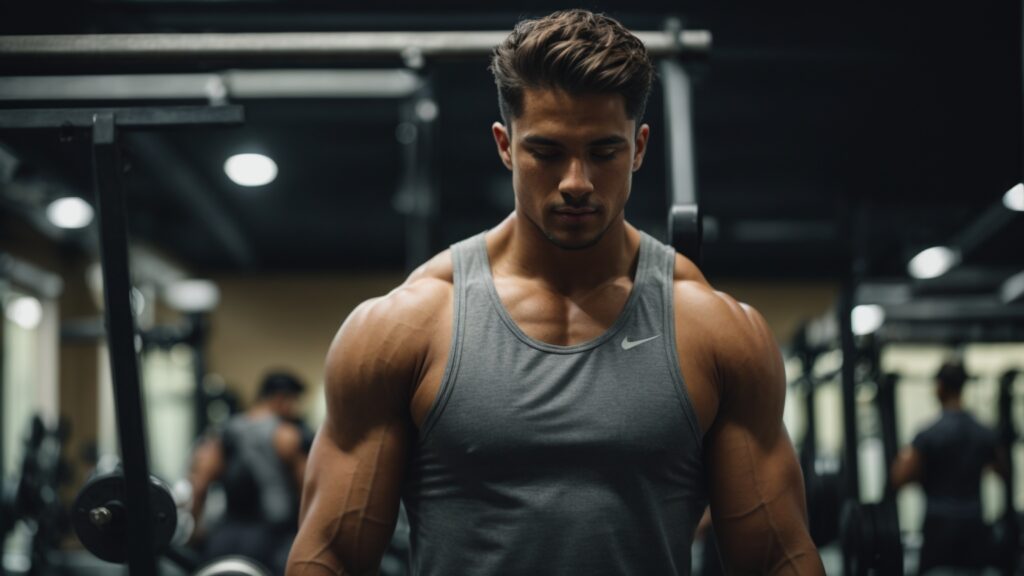
The Illusion of Accurate Fitness: Do Gym Mirrors Make You Look Thinner?
The perception of why do i look better in gym mirrors versus a regular mirror at home raises intriguing questions about body image and self-perception. While gym mirrors are often believed to create an illusion of a slimmer physique, this section delves into whether there is any truth to this belief or if it’s merely a psychological effect.
Factors Contributing to the Illusion: Detailed List
- Mirror Angle: Gym mirrors are often angled or tilted, which can alter the reflection, potentially making one appear thinner.
- Lighting: Bright and directional gym lighting enhances muscle definition and contours, creating an illusion of a leaner body.
- Mirror Quality: High-quality mirrors in gyms might provide a more flattering reflection compared to the regular mirror at home.
Exploring Specific Factors
The angle and tilt of mirrors in a gym setting are critical. When mirrors are slightly tilted forward, they can create an optical illusion, making the upper body appear more toned and, in some cases, thinner. This effect is further enhanced by strategic lighting that casts shadows in a way to accentuates muscles and reduces the appearance of body fat.
A fitness expert noted, “The way gym mirrors are angled, combined with the gym’s lighting, can indeed make one appear more toned. However, it’s more about feeling good during your workout than significantly altering your appearance.”
Further Exploration
Additionally, the psychological aspect plays a significant role. Seeing a seemingly more toned reflection can boost confidence and motivation during workouts, leading to a more positive gym experience, even if the physical appearance hasn’t changed drastically.
While gym mirrors may create an illusion of thinness due to their angle, lighting, and quality, it’s a combination of physical and psychological factors. This understanding helps us recognize the role of gym environments in influencing our perception of fitness and body image.
Accurate Perception vs. Reality: Can Gym Mirrors Make You Look Bigger?
The debate about whether gym mirrors make you look bigger than reality is a fascinating intersection of perception and reality. Many gym-goers report feeling more muscular or larger when observing themselves in gym mirrors compared to their reflections at home. This section examines if there is any truth to the notion that gym mirrors can manipulate our perception of body size.
Factors Influencing This Perception
- Mirror Angle and Tilt: Many gym mirrors are slightly tilted forward, creating an optical illusion that can make gym members appear stronger and more muscular.
- Lighting Conditions: The way gym lighting is set up can emphasize muscle definition and size, contributing to the appearance of a bigger physique.
- Mirror Quality: Higher-quality mirrors in gyms might provide a more flattering reflection, enhancing muscularity and overall body size.
Case Study: A study comparing reflections in gym and home mirrors found that the slight concavity in some gym mirrors can create an exaggerated image, making one look slightly larger. This effect is particularly noticeable in the upper body, where muscle definition is often a focus for gym-goers.
Additional Details
The psychological impact of this phenomenon cannot be overstated. When individuals see a more muscular version of themselves in the gym mirror, it can boost their self-esteem and motivation. This positive reinforcement, though based on an altered reflection, can be a powerful motivator in fitness journeys.
Further Discussion
However, it’s important to remember that these perceptions vary greatly from person to person. Factors like the individual’s angle of viewing, distance from the mirror, and personal body image perceptions play a crucial role in how one interprets their reflection in the gym mirror.
While gym mirrors can create an illusion of a bigger and more muscular body due to their angle, lighting, and quality, it’s essential to understand the blend of physical and psychological factors at play. Recognizing these elements helps demystify the impact of gym mirrors on our perception of fitness and body size.
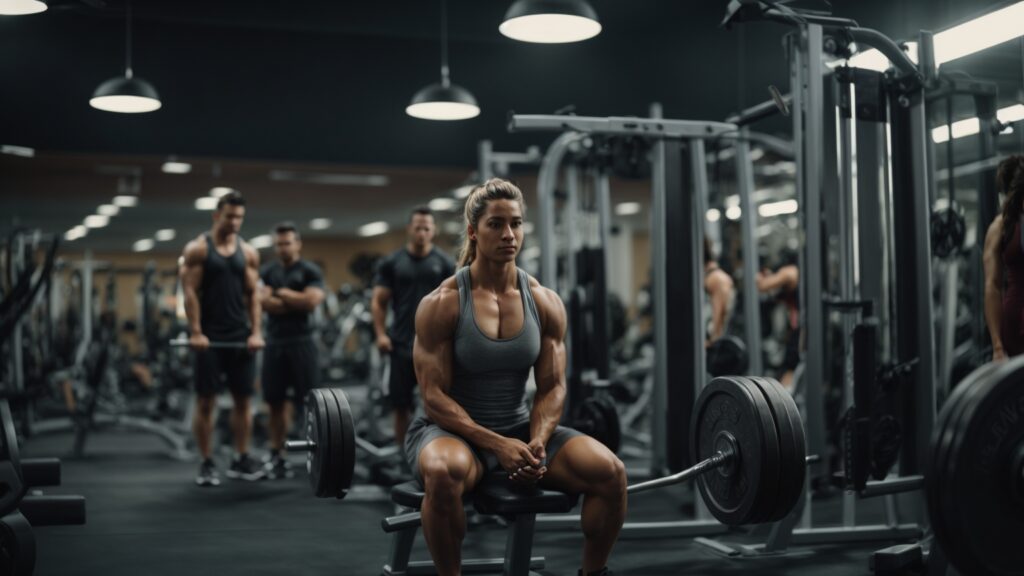
The Accurate Psychology Behind Gym Mirrors: Why Do They Exist?
The presence of mirrors in gyms is not just a matter of aesthetics; it serves a deeper psychological purpose. While it’s commonly believed that gym mirrors are there to make you look better or more muscular, they play a significant role in influencing gym-goers’ mental states and perceptions of their bodies.
Psychological Impacts: Detailing How Mirrors Affect Gym-Goers Mentally
- Self-Confidence Boost: Seeing a seemingly more toned body in the mirror can enhance self-confidence.
- Motivation and Performance: Observing one’s form and physique during a workout can motivate and improve performance.
- Body Dysmorphia Concerns: For some, these mirrors can exacerbate body image issues.
Self-Monitoring: Examining the Accurate Role of Mirrors in Self-Awareness During Gym Workouts
Mirrors in gyms allow individuals to monitor their form and posture during exercise. This immediate visual feedback is crucial for correcting techniques and preventing injuries. Additionally, the reflection helps maintain focus and ensure that each movement is executed correctly.
Displaying Psychological Studies and Their Findings on Gym Mirrors
| Study | Focus | Findings |
|---|---|---|
| “Mirror, Mirror in the Gym” | Form and Technique | Mirrors lead to better self-monitoring and technique improvement. |
| “Reflections on Fitness” | Motivation | Positive impact on motivation and workout intensity. |
| “Body Image and Gym Mirrors” | Body Perception | Mixed impact on body image, varying from positive to negative. |
Motivation Accurate Factor: How Mirrors Can Motivate Gym-Goers
Beyond technique monitoring, gym mirrors also play a role in motivation. Seeing physical improvements or working out in front of a mirror can be a powerful motivational tool. It provides a visual reminder of one’s fitness journey and goals.
Gym mirrors serve multifaceted psychological purposes, from enhancing self-awareness and technique to boosting motivation and confidence. While they can have varying impacts on body image and perception, their role in the gym environment is undeniably significant in shaping the workout experience.
Accurate Gym Mirrors: Acrylic or Plastic?
Regarding gym mirrors, the choice of material – acrylic or plastic – is not just a matter of cost or durability. It also impacts how gym-goers perceive their reflection. This difference in materials plays a significant role in the effectiveness of mirrors in gyms, affecting everything from clarity of reflection to safety and overall gym aesthetics.
Comparing the Properties of Acrylic and Plastic Mirrors
| Property | Acrylic Mirrors | Plastic Mirrors |
|---|---|---|
| Durability | High impact resistance, less likely to shatter | Prone to scratches, less durable than acrylic |
| Clarity | Clearer, more precise reflections | It can distort over time, less clear |
| Safety | Shatter-resistant, safer in high-traffic areas | Breakable, potential safety hazard |
| Cost | Generally more expensive | More affordable option |
| Maintenance | Easy to clean and maintain | Requires regular cleaning, more susceptible to damage |
Durability and Safety: Assessing the Practicality of Different Materials
Acrylic mirrors are often favored in gyms for their durability and safety. They are less likely to break or shatter upon impact, making them a safer choice in a dynamic gym environment. Plastic mirrors, while more affordable, do not offer the same level of durability and can be a safety risk if broken.
A gym owner commented, “We chose acrylic mirrors for our gym because they provide clear reflections and are much safer. They withstand the daily wear and tear of a gym better than plastic mirrors.”
Case Study: In a high-end fitness center case study, the decision to use acrylic mirrors was based on aesthetic and practical considerations. The acrylic mirrors offered a distortion-free reflection essential for accurate form monitoring during workouts and a sleek, modern look that enhanced the gym’s interior design.
The choice between acrylic and plastic mirrors in gyms hinges on factors like durability, safety, clarity, and cost. While acrylic mirrors are generally preferred for their higher quality and safety features, plastic mirrors may be chosen for budgetary reasons despite their limitations.
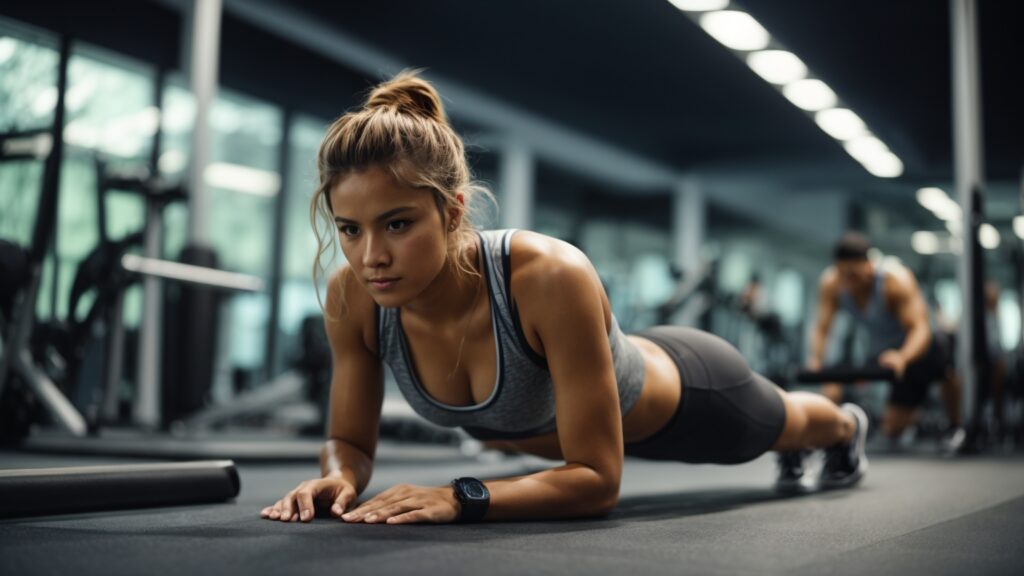
The Accurate Role of Angled Gym Mirrors in Workouts
The angle of mirrors in a gym plays a critical role beyond merely providing a reflection. These angled mirrors are strategic elements in fitness environments, influencing how gym-goers see themselves and their workouts and overall gym experience.
Benefits of Angled Mirrors: Enumerating the Advantages
- Improved Form and Technique: Angled mirrors help exercisers monitor and correct their form during workouts.
- Enhanced Motivation: Seeing one’s body from different angles can motivate and encourage continued effort and improvement.
- Safety: Angled mirrors allow for a broader view of the surroundings, helping to prevent accidents in busy gym spaces.
Technique Improvement: Detailing How Angled Mirrors Aid in Form Correction
One of the primary benefits of angled gym mirrors is their role in technique improvement. They provide a multi-angle view, allowing individuals to self-correct their posture and form during exercises like weightlifting or yoga, leading to more effective workouts and reduced risk of injury.
Spatial Awareness: Discussing the Role in Enhancing Gym Space
Angled mirrors also contribute significantly to spatial awareness in a gym setting. They create an illusion of a larger space, making the gym environment more inviting and less claustrophobic. This expanded view is especially beneficial in smaller gyms where space is at a premium.
Aesthetic Appeal: How Angles Contribute to the Gym’s Look
Beyond functionality, the angle of gym mirrors adds an aesthetic dimension to the fitness space. They reflect light to make the gym appear brighter and more vibrant, contributing positively to the overall ambiance and feel.
The role of angled mirrors in gyms extends far beyond mere reflection. They are key in enhancing workout effectiveness, safety, and the overall aesthetic of the gym environment. Understanding their benefits underscores their importance in the design and functionality of modern fitness spaces.
Debunking Myths: Do Gym Mirrors Make You Look Fat?
Many people wonder if gym mirrors are different from those you find in a home gym or elsewhere. The truth is, gym mirrors might actually make you look better. These mirrors are designed to help you look more muscular and look more toned, enhancing your confidence as you work to achieve your fitness goals. Unlike normal mirrors, which simply reflect your appearance, gym mirrors often come with good lighting and are set at an angle that can make you look your best, including appearing look taller. The reflection in the mirror at the gym can vary from a regular mirror at home because of this. So, when you see yourself looking great at the gym, it’s not just in your head—it’s the clever setup of the mirrors and lighting!
Case Study: In a study comparing gym mirror reflections with those in home mirrors, researchers found no significant evidence that gym mirrors make individuals look larger. Instead, they concluded that the combination of lighting and mirror angle in gyms often creates an illusion of a more toned physique.
Mirror Types and Effects: Exploring Different Mirror Types
Gym mirrors typically include two types: flat and slightly concave. While flat mirrors provide a more accurate reflection, slightly concave mirrors, which are less common, can create a subtle optical illusion that might make a person’s reflection appear slightly larger.
Perception of Body Image: How Mirrors Impact Body Image Perception
The way individuals perceive their bodies in gym mirrors can vary. For some, the mirrors can be a source of motivation, while others may accentuate body image concerns. The perception largely depends on individual body image and the psychological impact of seeing oneself in a mirror during physical activity.
Summarizing Studies or Surveys on This Topic
| Study | Focus | Findings |
|---|---|---|
| “Reflections of Fitness” | Body Image | The majority did not perceive an increase in body size in gym mirrors. |
| “Mirror Image and Self-Perception” | Psychological Impact | Varied responses based on personal body image concerns. |
| “Gym Mirrors and Body Perception” | Type of Mirror | Slight differences in perception with different mirror types. |
A fitness expert explains, “Gym mirrors are primarily there to assist in form correction, not to distort body size. Any perception of looking larger or smaller is more psychological and dependent on lighting and angles rather than the mirror itself.”
The belief that gym mirrors make you look fat is largely a myth. While different types of mirrors and lighting conditions can affect perception, there is no deliberate design in gym mirrors to make individuals appear larger than they are.
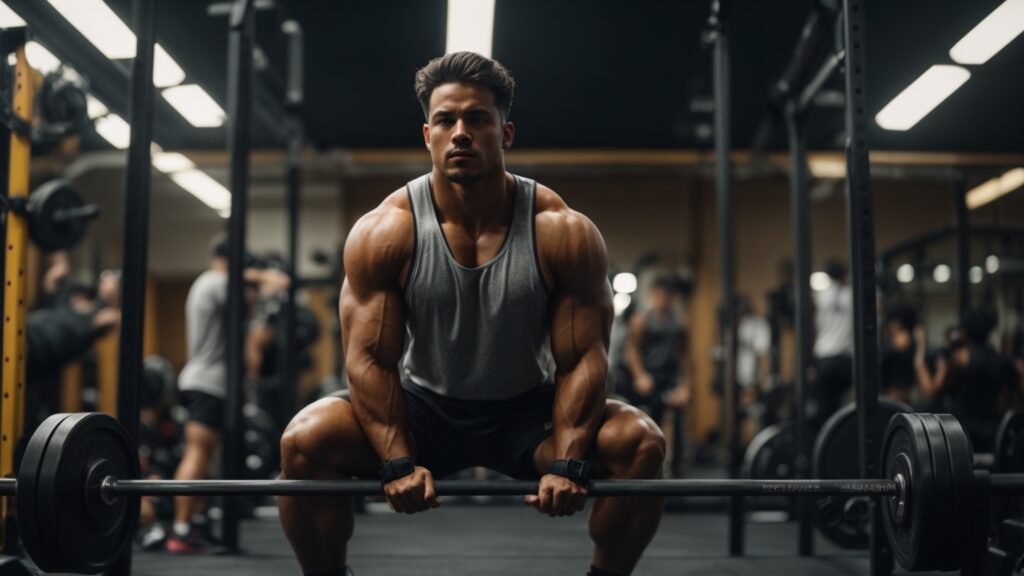
Planet Fitness Mirrors: A Case Study
Planet Fitness, known for its “Judgement Free Zone” philosophy, has a unique approach to gym design, including using mirrors. This case study focuses on the mirrors in Planet Fitness gyms and how they align with the brand’s overall ethos and member experience.
Key Points About Their Mirrors
- Type of Mirrors: Mostly flat with slightly concave mirrors, creating a more inclusive and less intimidating environment.
- Mirror Placement: Strategically placed to enhance lighting and space, contributing to a comfortable workout setting.
- Psychological Impact: Designed to promote a positive body image and reduce anxiety around body perception.
Member Experiences: Feedback from Gym Members
Members of Planet Fitness often report feeling more comfortable and less self-conscious about their bodies due to the mirror setup. The mirrors provide enough reflection for form-checking without emphasizing body size, which aligns well with the gym’s emphasis on a non-intimidating atmosphere.
Case Study: Planet Fitness’s mirror strategy appears integral to its effort to create a welcoming environment. The use of slightly concave mirrors, as opposed to the more common flat or slightly convex mirrors in other gyms, helps create a perception of a bigger space, making members feel less cramped and more at ease.
Brand Image and Mirrors: How the Mirrors Align with the Brand’s Philosophy
The mirror choice at Planet Fitness is a reflection (pun intended) of their commitment to a non-judgmental, approachable fitness environment. By avoiding mirrors that overly accentuate physique, they reinforce their message of body positivity and inclusiveness.
Comparing with Other Gyms: Contrast with Other Fitness Centers
Planet Fitness takes a subtler approach than other fitness centers, where mirrors might create an illusion of being fitter or more muscular. Their mirrors do not overly flatter or distorted body image, starkly contrasting the industry norm.
Planet Fitness’s use of mirrors is a thoughtful component of its branding and member experience strategy. Their approach prioritizes comfort and positive self-perception, setting them apart from other fitness centers and aligning perfectly with their inclusive philosophy.
- 16PCS Glass Wall Mirror Tiles
- 12" Full Body Mirror Sticker
- Frameless Mirror Panels
- Door Ceiling Candle Tray Wedding Centerpieces for Table
Conclusion
Throughout this exploration, we have delved into various aspects of gym mirrors, from their design and placement to their psychological impacts. We’ve learned that while gym mirrors can create illusions – making us look thinner, bigger, or more muscular due to factors like angle, lighting, and mirror type – these effects are often subtle and more psychological than physical. The role of gym mirrors extends beyond mere reflection; they are integral in workout motivation, technique correction, and enhancing the overall gym experience.
In conclusion, the accuracy of gym mirrors is a nuanced topic. While they may not drastically distort our appearance, their strategic design can influence our perception of our physique. This influence, however, is not solely about vanity or deception. It’s about creating an environment that motivates and empowers. Whether through the slight tilting of mirrors in Planet Fitness to foster a non-intimidating atmosphere or using high-quality acrylic mirrors for clearer reflections, each aspect of gym mirror design serves a purpose. Ultimately, while gym mirrors might not always show a 100% accurate reflection, their role in supporting and enhancing our fitness journey is undeniably significant.

James Dunnington leads the James Dunnington Collection, featuring five unique blogs: a practical Pet Care Guide, an enlightening Ancient History Blog, a resourceful Home Improvement Guide, a cutting-edge Tech Innovation Guide, and a strategic Online Money Making platform. Each site delivers valuable insights designed to empower and inform. For updates and more tips, visit our Contact Us page to sign up for our newsletter, ensuring you never miss out on the latest content from any of these dynamic fields.

